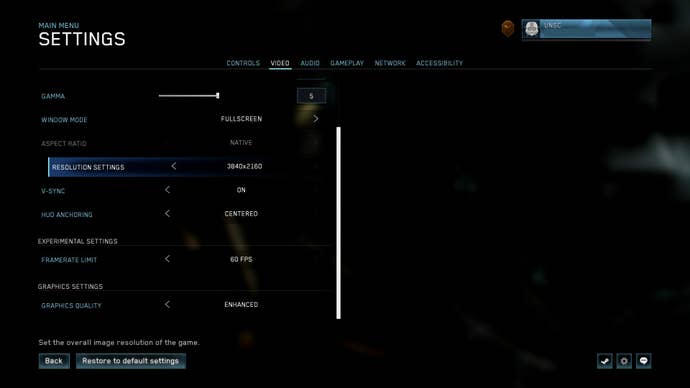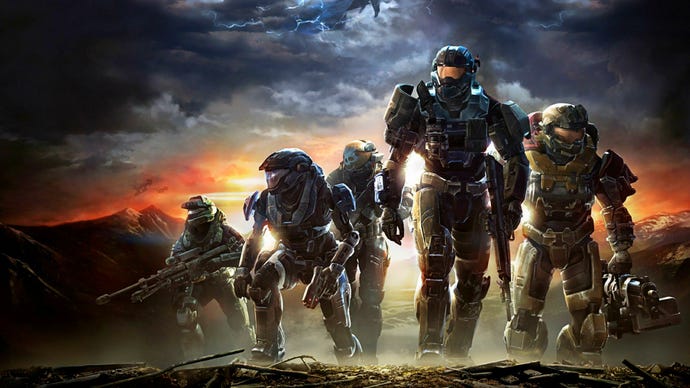Halo: Reach is Still Great—But Its PC Port is Missing Some Key Features
The magic of Halo coming to Steam is marred by a barebones port.
This article first appeared on USgamer, a partner publication of VG247. Some content, such as this article, has been migrated to VG247 for posterity after USgamer's closure - but it has not been edited or further vetted by the VG247 team.
Despite Halo: Reach being a tragic game about the last stand of a few valiant soldiers on a dying world, I've had a pleasant time revisiting it. Reach finally made its PC and Xbox One debut on Tuesday, alongside the release of Halo: The Master Chief Collection on Steam. Like Halo: ODST, Reach is an odd inclusion, given that the eponymous Master Chief isn't a protagonist. But 2010's Halo: Reach is the endpoint of the original Halo (2001), the well-loved franchise before the Reclaimer Saga kicked off with 2012's Halo 4.
Halo: Reach still holds up almost a decade later. It's the direct prequel to the first Halo, taking place during the thematic Alamo of the Human-Covenant War. What remains striking about the tale is the sense of scope and overall despair. More so than Halo: ODST, Reach really feels like you're participating in a war documentary; you can almost hear the British announcer quitely lamenting, "These are the final hours of Noble Team. Heroes all." There's a sense of horror to the Covenant, which is impressive since this was the fifth game with the alien race as an antagonist.
It also helps that you're in the trenches with a wonderful cast of characters. You play the customizable, nearly-silent Noble Six, a new addition to Noble team. The team is made of broad strokes—like brusque hacker Kat, caustic soldier Emile, and kind big bear Jorge—but over the course of the campaign, they become wonderful companions. The team is on the back foot for all of Reach, always behind the Covenant and doing their best to stem the tide. But we know where Reach ends, and like Star Wars: Rogue One, it's a little bittersweet to get to know these characters with their eventual end in mind.
Playing Reach again in 2019, it's now pretty much a throwback to an older style of shooter. Early in my playtime, while investigating reports of an attack with Carter, I noticed him hiding behind cover. I tried to do the same on the opposite side of doorway, only to realize that this wasn't a cover shooter. There's a bunch of small facets of this older style of shooter. There are health pickups, and the fact that you can't reload a gun with ammo of a similar weapon on the ground—you just have to pick up a new gun. Even just the environmental clutter of Reach is ancient: sparse rooms of random crates and sandbags being something that you generally see from a shooter these days.
This was Bungie's last Halo game too, and you can see the ideas that connect Reach and Destiny. The latter includes some of the concepts of Reach writ large, like the proper use of scope to make the player feel like just one soldier in a war or the slight tinge of horror. It almost makes me miss the days when complete story campaigns were the focus of Bungie's work, rather than the long prelude to the real, repeatable game.

Visually, Halo: Reach still largely holds up. You can tell in the geometry that this is an older game, but 343 Industries has done a great job with the textures, ground clutter, and lighting. It's honestly a testament to Bungie's artwork on the original Halo: Reach that this PC ports looks as good as it does. The image quality is largely fantastic and wonderfully crisp, holding at a rock-solid 60fps.
What's interesting is where 343 Industries did not change Halo: Reach for PC. Old problems carry over from the original game, like the poor audio mix: all of the guns are entirely too quiet compared to the rest of the audio. Or there's the issues that come with simply not targeting Halo: Reach for its new platform. The strength of the PC has always been its malleability: you have the option to tweak a game to get the performance and visuals you want, within the bounds of your hardware.
Reach on PC lacks many of the visual options players have come to expect from PC games. You get a host of resolution settings, a v-sync toggle, the ability to set the graphics to "original" or "enhanced", and the choice between a 60fps frame rate lock or unlimited. That's it. No anti-aliasing or filtering options, no ability to change shadows or draw distance. That's an odd series of omissions for a PC port, and if Halo coming to Steam wasn't a novelty, I feel like there'd be more anger about this.

There's also the problem of keybindings. When you sit down to play a first-person shooter on PC, how do you change weapons? Generally you either scroll the scroll wheel, or hit the number key that corresponds to a certain weapon. In Halo: The Master Chief Collection, the scroll wheel does absolutely nothing. You change weapons by hitting "1" multiple times, while "2" changes which type of grenade you're using. It's user input that's meant for a controller, not a mouse and keyboard—only slightly worse because it's carried over from 2010, before FPS games started using features like radial menus more often.
There's also a strong aim assist, which really isn't needed when you're playing with mouse and keyboard. During my time with Reach's campaign, the DMR became the most useful weapon, because while it was single shot, the damage combined with almost constant ability to headshot meant I was killing Elites with little issue. So the ability to toggle aim assist and perhaps a damage rebalance would be a great addition for a potential future patch.
It's a weird situation because this isn't the greatest PC port, but I'm still having a ton of fun revisiting Halo: Reach despite its shortcomings. This was the last Halo game I really played, as the Reclaimer Saga (Halo 4 and Halo 5: Guardians) never really caught my interest. Reach is Bungie at the top of its Halo game, with one of my favorite campaigns in the series. I don't necessarily want to go back to this style of game, but it's been nice to revisit it. Especially with my errant thoughts about the future of Halo, like my speculation that Halo Infinite might simply be Halo cast in Destiny's image.










